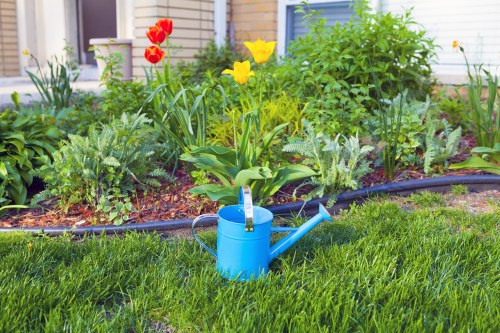Kitchen Cleaning in Spot Cleaner

Maintaining a spotless kitchen is essential for both hygiene and aesthetics. **Kitchen cleaning in spot cleaner** solutions can make this task more manageable, ensuring every nook and cranny is free from dirt and grime. Whether you're dealing with everyday spills or stubborn stains, having the right approach and tools can transform your cleaning routine.
Spot cleaning targets specific areas that require immediate attention, preventing the accumulation of messes that can lead to more extensive cleaning sessions. This method not only saves time but also enhances the overall cleanliness of your kitchen, making it a more pleasant space for cooking and dining.
In this article, we will explore the best practices for kitchen cleaning using spot cleaners, the tools and products you need, and tips to maintain a pristine kitchen with minimal effort.
Why Spot Cleaning is Essential in Kitchen Maintenance

**Spot cleaning** plays a critical role in maintaining kitchen hygiene. By addressing spills and stains as they occur, you prevent the buildup of bacteria and mold that can compromise food safety. Additionally, regular spot cleaning helps preserve the appearance of your kitchen surfaces, ensuring they remain in excellent condition for longer periods.
Moreover, spot cleaning is a cost-effective approach. Instead of investing in extensive cleaning services or expensive products to tackle accumulated dirt, a spot cleaning routine allows you to manage cleanliness efficiently with minimal resources.
Implementing spot cleaning strategies also fosters better organization. When messes are dealt with promptly, it encourages a habit of tidiness, which can extend to other areas of the home, promoting an overall organized living environment.
Tools and Products for Effective Spot Cleaning

Having the right tools and products is crucial for effective **kitchen cleaning in spot cleaner** methods. Equip your kitchen with essentials like microfiber cloths, scrub brushes, and spray bottles to tackle various cleaning tasks efficiently.
Cleaning Agents: Choose versatile cleaning agents that can handle different types of stains. All-purpose cleaners, degreasers, and specialized cleaners for stainless steel or granite surfaces are invaluable for maintaining different areas of the kitchen.
Tools: Invest in quality tools such as non-abrasive sponges for delicate surfaces, sturdy scrub brushes for tougher grime, and silicone gloves to protect your hands during cleaning.
Cleaning Agents

When selecting cleaning agents for spot cleaning, consider environmentally friendly options that are safe for both your family and the planet. Natural cleaners like vinegar, baking soda, and lemon juice are effective alternatives to chemical-based products.
For grease and oil spills, a degreaser can quickly break down the residue, making it easier to wipe away without leaving streaks. Enzyme-based cleaners are also excellent for removing organic stains, ensuring your kitchen stays fresh and clean.
Always read the labels and follow the instructions of cleaning products to ensure safety and effectiveness. Proper usage of these agents will enhance the longevity of your kitchen surfaces while maintaining a high standard of cleanliness.
Tools

The right tools can make spot cleaning significantly easier and more effective. Microfiber cloths are highly absorbent and can trap dust and dirt without scratching surfaces. Scrub brushes with different bristle strengths allow you to tackle both light and heavy stains with ease.
Spray bottles enable you to apply cleaning solutions directly to the affected area, ensuring targeted treatment without wasting product. Additionally, having a sturdy scraper can help remove stubborn debris without damaging your countertops or appliances.
Organize your cleaning tools in a convenient location, such as a cabinet or a caddy, so they are easily accessible when needed. This setup encourages regular spot cleaning and helps maintain a consistently clean kitchen environment.
Step-by-Step Guide to Spot Clean Your Kitchen

Following a systematic approach to spot cleaning ensures that no area is overlooked. Here is a comprehensive guide to effectively clean your kitchen using spot cleaner techniques:
1. Identify the Area: Determine the specific spot that needs cleaning, whether it's a countertop, appliance, or floor. Assess the type of stain or spill to choose the appropriate cleaning agent.
2. Gather Supplies: Collect all necessary cleaning tools and products before starting. This preparation saves time and ensures you have everything you need at hand.
Surface Cleaning

Start by cleaning countertops, cutting boards, and other surfaces where food is prepared. Use an all-purpose cleaner or a mixture of vinegar and water to wipe down these areas, removing any spills or crumbs that could harbor bacteria.
Pay special attention to high-touch areas like knobs and handles. Disinfecting these spots regularly can prevent the spread of germs and maintain a hygienic kitchen environment.
For stubborn stains, apply a paste of baking soda and water, let it sit for a few minutes, then scrub gently with a sponge. This method effectively lifts stains without damaging the surface.
Appliance Spot Cleaning

Appliances such as ovens, microwaves, and refrigerators often accumulate grease and food residues. Regularly spot clean these devices to maintain their functionality and appearance.
For the oven, use a specialized cleaner to break down baked-on grease, then wipe it clean with a damp cloth. The microwave can be cleaned by heating a bowl of water with lemon slices for a few minutes, then wiping away the loosened grime.
Refrigerator interiors can be spot cleaned with mild soap and water, ensuring that all spills are thoroughly removed to prevent unpleasant odors and contamination of food items.
Floor Spot Cleaning

Kitchen floors are prone to spills and stains, especially under appliances and cabinets. Regularly spot clean the floor to prevent slippery surfaces and maintain safety.
Use a mild detergent mixed with warm water to mop the floor, focusing on high-traffic areas. For tougher stains, apply a mixture of vinegar and baking soda, allow it to sit for a few minutes, then scrub with a brush before rinsing.
Ensure the floor is thoroughly dried after cleaning to prevent mold growth and maintain a clean, safe kitchen.
Common Kitchen Spills and How to Spot Clean Them

Different types of spills require specific spot cleaning techniques to ensure effective removal. Understanding how to handle common kitchen spills can make your cleaning routine more efficient and prevent long-term damage to your surfaces.
Grease and Oil: Grease spills can attract pests and cause surfaces to become slippery. Use a degreaser or a mixture of warm water and dish soap to break down the grease, then wipe thoroughly with a clean cloth.
Food Stains: Stubborn food stains on countertops or floors can be removed using a paste of baking soda and water. Apply the paste to the stain, let it sit for a few minutes, then scrub gently before rinsing.
Beverage Spills

Spills from beverages like coffee, wine, or juice can leave sticky residues and stains. Immediately blot the spill with a clean cloth to absorb as much liquid as possible.
For remaining sticky areas, use a mixture of water and vinegar to clean the surface, followed by a gentle scrub with a sponge. Ensure the area is dried thoroughly to prevent sticky residues and potential stains.
For colorful beverages, using a diluted bleach solution can help remove stubborn stains, but always test a small area first to ensure it doesn't damage the surface.
Tips and Tricks for Efficient Spot Cleaning

Efficiency is key when it comes to spot cleaning. Implementing the following tips can streamline your cleaning process and make your kitchen maintenance more effective:
Daily Habits: Incorporate cleaning into your daily routine by wiping down surfaces after each meal preparation. This prevents the buildup of messes and reduces the need for extensive cleaning sessions.
Preventive Measures: Use mats and protective covers in areas prone to spills, such as in front of the stove or sink. These can catch drips and splatters, making spot cleaning easier and preserving the underlying surfaces.
Dedicated Cleaning Schedule

Establishing a regular cleaning schedule ensures that spot cleaning tasks are consistently addressed. Allocate specific times each day or week for targeted cleaning activities, such as wiping down appliances or mopping the floor.
Use a checklist to keep track of completed tasks and identify areas that need attention. This organized approach helps maintain a consistently clean kitchen without feeling overwhelmed by the workload.
Incorporate seasonal deep cleaning sessions to address areas that may require more intensive cleaning, such as behind appliances or inside cabinets.
Organizational Tips

Keeping your kitchen organized can significantly reduce the amount of clutter and mess that requires spot cleaning. Implementing storage solutions like shelves, bins, and organizers can help keep everything in its place.
Label containers and designate specific areas for different items to streamline your kitchen workflow and minimize accidental spills. An organized kitchen not only looks appealing but also enhances efficiency during meal preparation and cleaning.
Regularly declutter countertops by storing appliances and utensils that are not frequently used. This practice reduces the number of surfaces that need to be cleaned, making spot cleaning more manageable.
Eco-Friendly Spot Cleaning Solutions

Adopting eco-friendly spot cleaning practices benefits both your kitchen and the environment. Using natural cleaning agents reduces exposure to harmful chemicals and minimizes environmental impact.
Natural Cleaners: Ingredients like vinegar, baking soda, and lemon juice are effective alternatives to commercial cleaning products. They can tackle a variety of stains and spills without leaving toxic residues.
Sustainable Practices: Reuse and recycle cleaning materials where possible. For example, use old newspapers or cloths instead of disposable wipes, and opt for refillable spray bottles to minimize plastic waste.
Homemade Cleaning Solutions

Creating your own cleaning solutions is both economical and environmentally friendly. A simple mixture of equal parts water and vinegar can be used to clean countertops, appliances, and floors effectively.
Baking soda can be combined with water to form a paste for scrubbing stubborn stains, while lemon juice provides natural antibacterial properties and a fresh scent.
These homemade cleaners are safe for most surfaces and eliminate the need for harsh chemicals, making them a superior choice for a healthy kitchen environment.
Reducing Waste

Minimizing waste during the cleaning process contributes to a more sustainable kitchen. Use reusable cleaning cloths and towels instead of disposable paper products, and choose products with recyclable packaging.
Implement a cleaning routine that maximizes the use of cleaning agents, reducing the frequency of repurchasing and ensuring that resources are used efficiently.
Properly dispose of any waste materials and avoid contributing to landfill accumulation by opting for biodegradable or compostable cleaning supplies when possible.
How to Choose the Right Spot Cleaner for Your Kitchen

Selecting the appropriate spot cleaner is essential for effective kitchen maintenance. Consider the following factors to make an informed decision:
Features to Consider: Look for spot cleaners that offer versatility, such as adjustable spray nozzles and interchangeable attachments for different cleaning tasks. A lightweight and ergonomic design can also enhance usability, especially for prolonged cleaning sessions.
Top Spot Cleaner Products: Research and compare top-rated spot cleaner products to find one that best suits your kitchen's needs. Reading reviews and seeking recommendations can provide valuable insights into the performance and reliability of various options.
Performance and Efficiency

Evaluate the performance of spot cleaners based on their ability to handle different types of stains and spills. A high-efficiency spot cleaner should clean effectively without requiring excessive effort or multiple applications.
Consider the drying time required after cleaning, as this can impact the overall efficiency of your kitchen maintenance routine. Spot cleaners that promote quick drying help maintain a clean and safe cooking environment.
Additionally, assess the durability and build quality of the cleaner. A long-lasting product ensures consistent performance and reduces the need for frequent replacements, providing better value for your investment.
User-Friendly Design

A user-friendly design enhances the overall experience of spot cleaning. Features like easy-to-fill reservoirs, comfortable grips, and clear indicators for usage levels make the cleaning process more convenient.
Portability is another important aspect, especially if you need to move the cleaner between different areas of the kitchen. Lightweight models with compact designs are easier to handle and store, ensuring that your spot cleaner is always readily available when needed.
Additional features, such as built-in storage compartments for cleaning agents or interchangeable nozzles, add versatility and functionality to your spot cleaner, making it a valuable addition to your kitchen cleaning arsenal.
Maintaining a Spot-Free Kitchen: Long-Term Strategies

Achieving a consistently clean kitchen requires long-term strategies that go beyond regular spot cleaning. Implementing these strategies ensures that your kitchen remains spotless and organized over time.
Regular Cleaning Schedule: Establish a routine that incorporates both spot cleaning and periodic deep cleaning tasks. Scheduling specific times for cleaning helps maintain a high standard of cleanliness and prevents messes from becoming overwhelming.
Organizational Tips: Keeping your kitchen organized minimizes clutter, making it easier to manage spills and stains. Utilize storage solutions to keep items in order, and avoid overcrowding countertops to facilitate effortless spot cleaning.
Deep Cleaning Sessions

In addition to daily spot cleaning, schedule regular deep cleaning sessions to address areas that are not frequently accessed. Deep cleaning involves tackling hidden spots like behind appliances, inside cabinets, and under the sink, where dirt and grime can accumulate unnoticed.
Use specialized tools and cleaning agents during these sessions to thoroughly clean and sanitize these areas. This proactive approach helps maintain a consistently clean kitchen and extends the lifespan of your appliances and surfaces.
Documenting your deep cleaning schedule can help you stay organized and ensure that no area is neglected over time.
Implementing Sustainable Habits

Adopting sustainable cleaning habits contributes to a long-term spot-free kitchen. This includes using minimal amounts of cleaning agents, reusing cleaning materials, and reducing waste generated during the cleaning process.
Encourage all household members to participate in maintaining kitchen cleanliness by assigning specific tasks and promoting responsible cleaning practices. Creating a shared responsibility fosters a collective effort towards keeping the kitchen spotless.
Additionally, regularly review and update your cleaning supplies to ensure you are using the most effective and eco-friendly products available.
Conclusion

**Kitchen cleaning in spot cleaner** methods offer a practical and efficient way to maintain a spotless and hygienic kitchen. By using the right tools and products, following a systematic cleaning routine, and adopting sustainable practices, you can ensure your kitchen remains clean with minimal effort.
Implementing the strategies outlined in this article will not only enhance the appearance of your kitchen but also contribute to a healthier living environment for you and your family.
Ready to transform your kitchen cleaning routine? Contact us today to discover the best spot cleaning solutions tailored to your needs and experience a cleaner, more organized kitchen effortlessly.